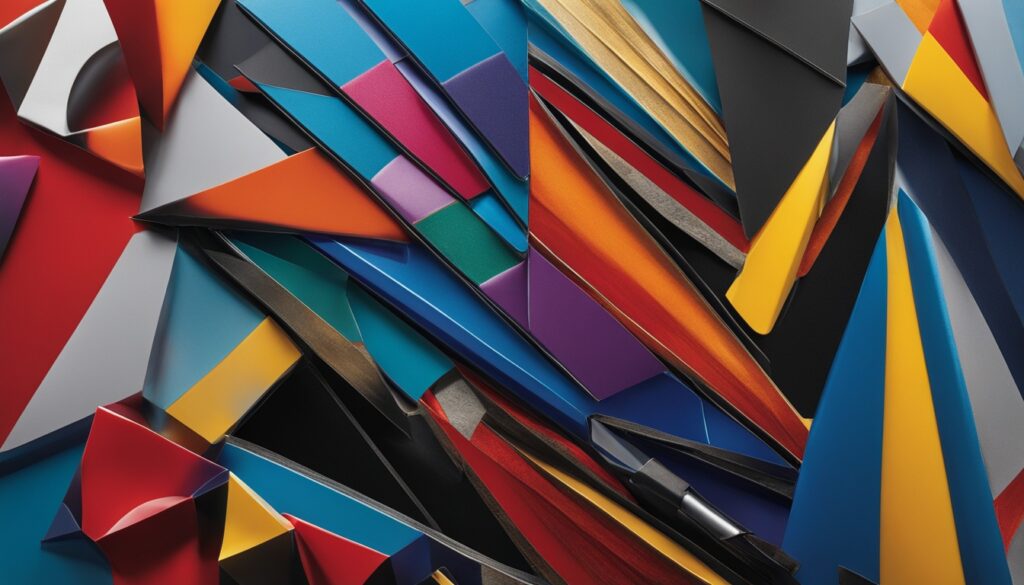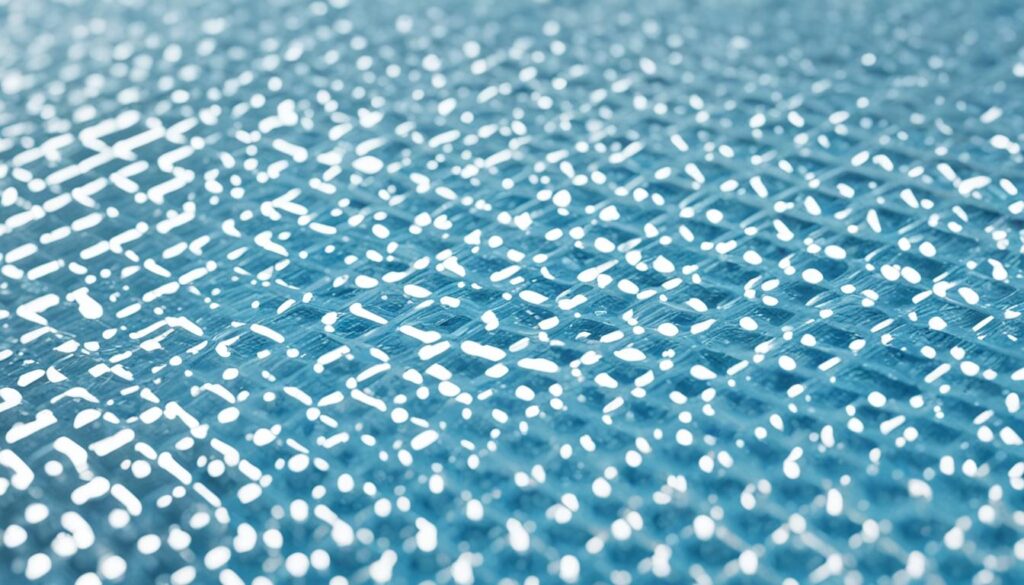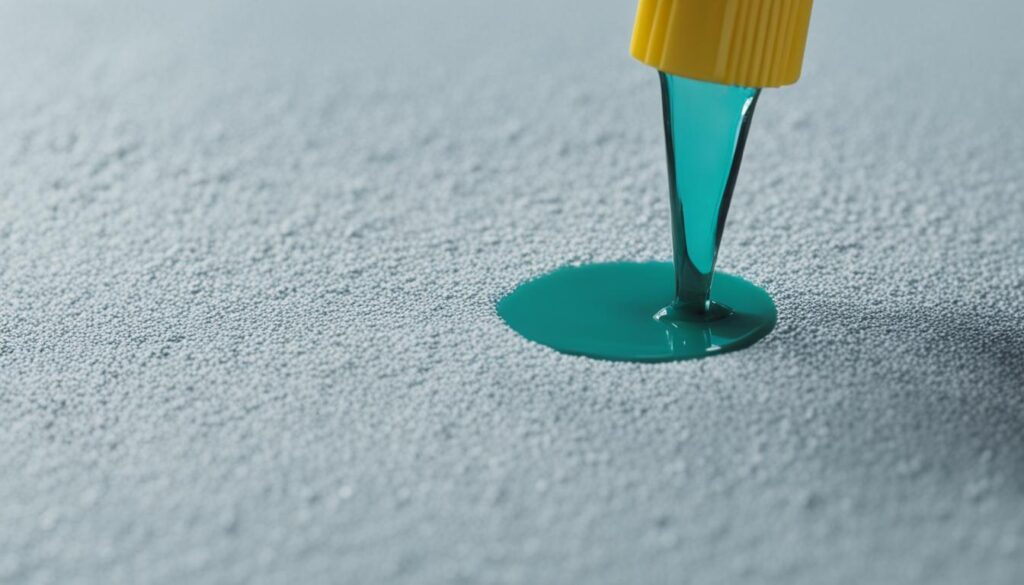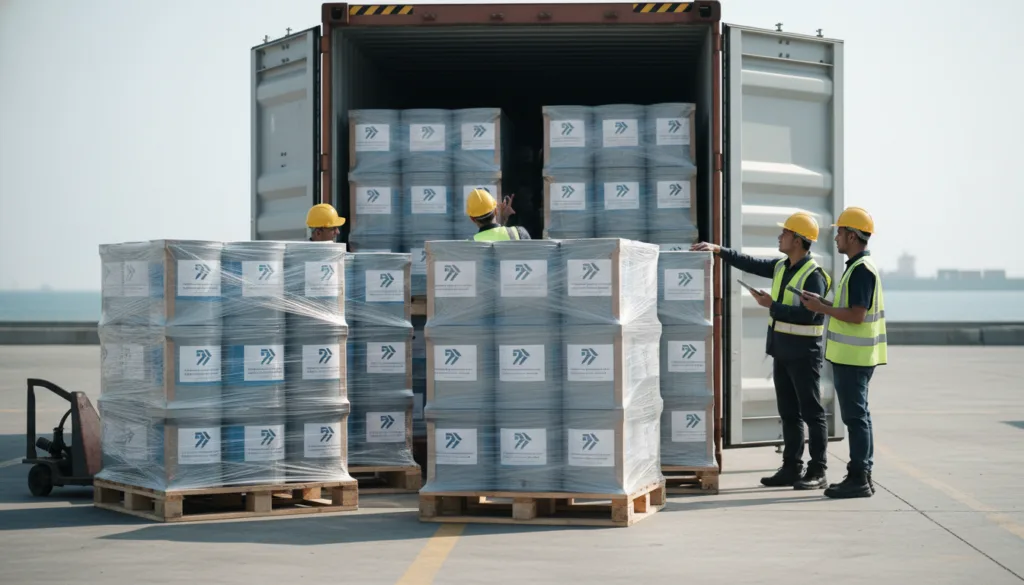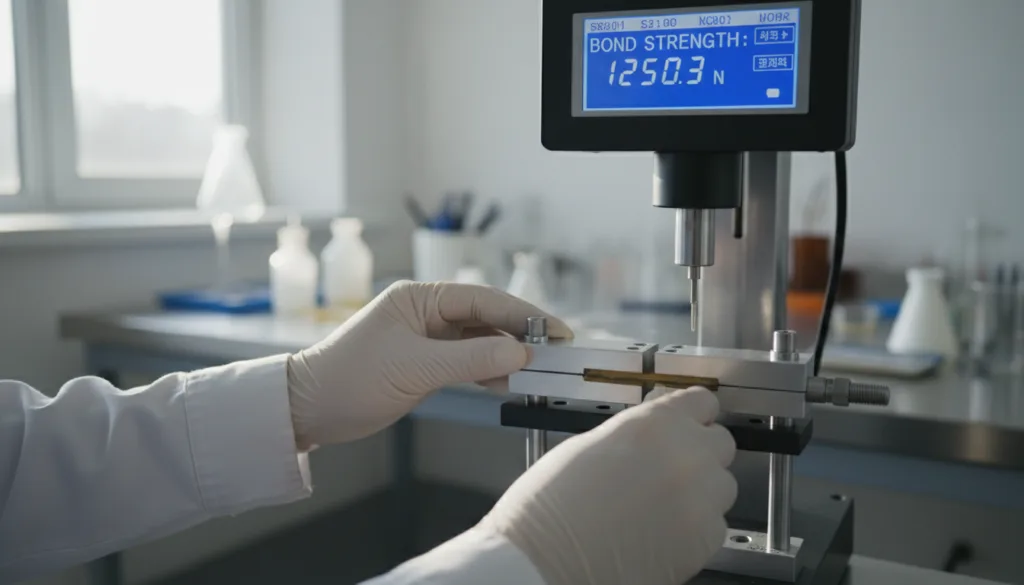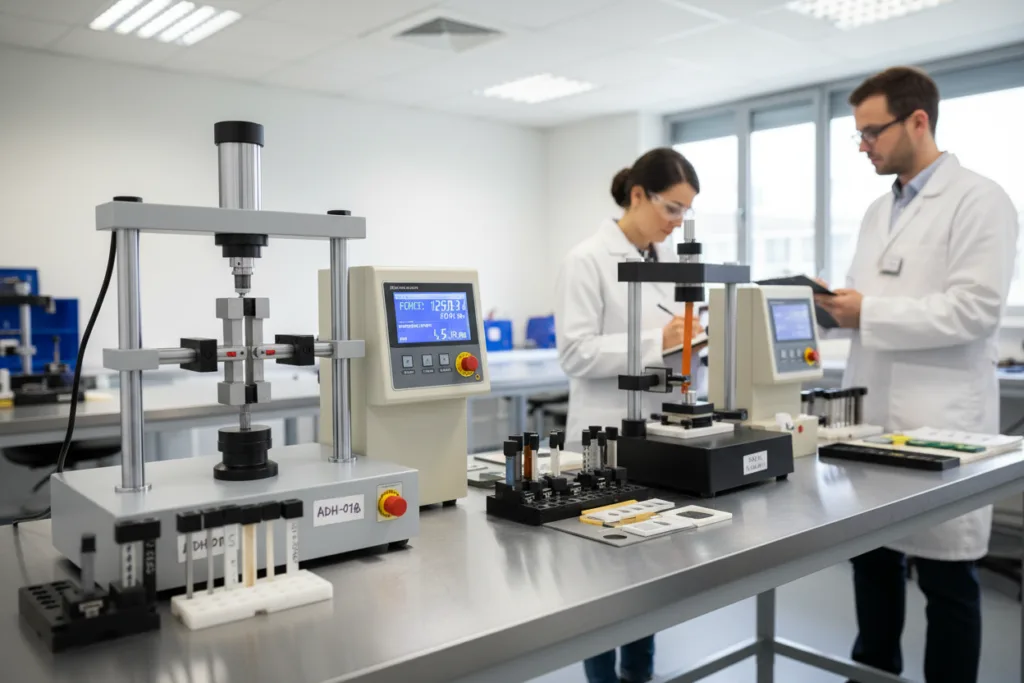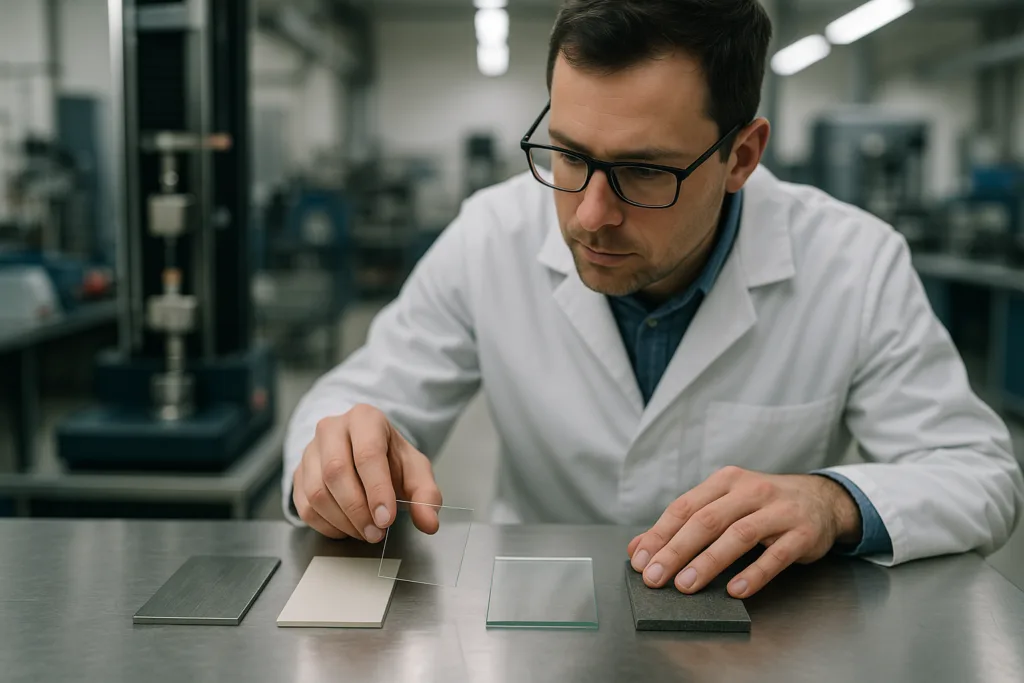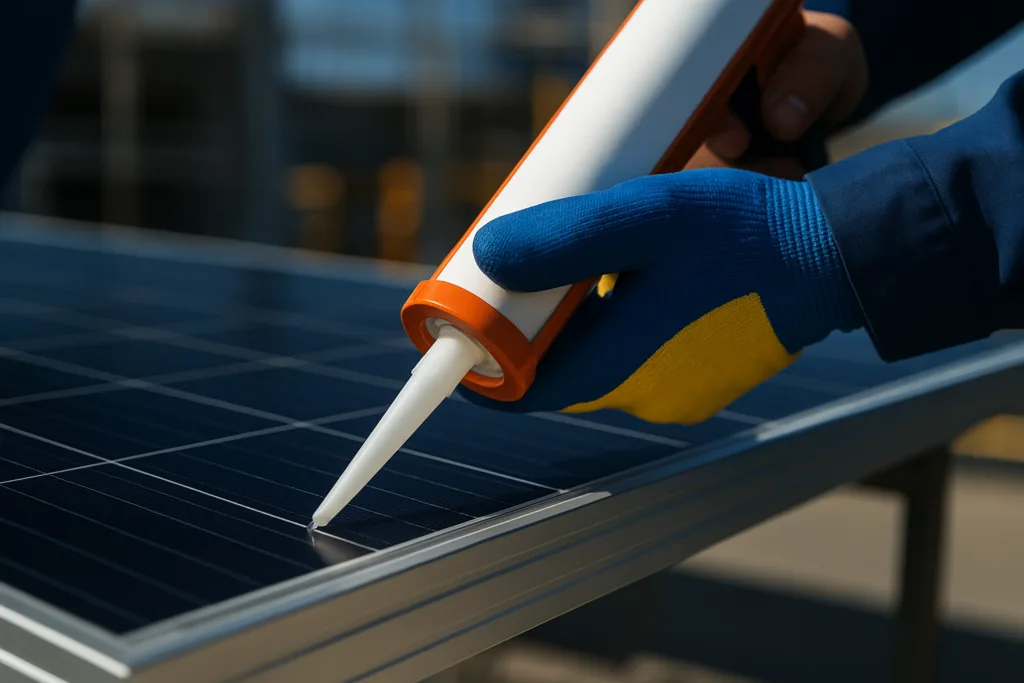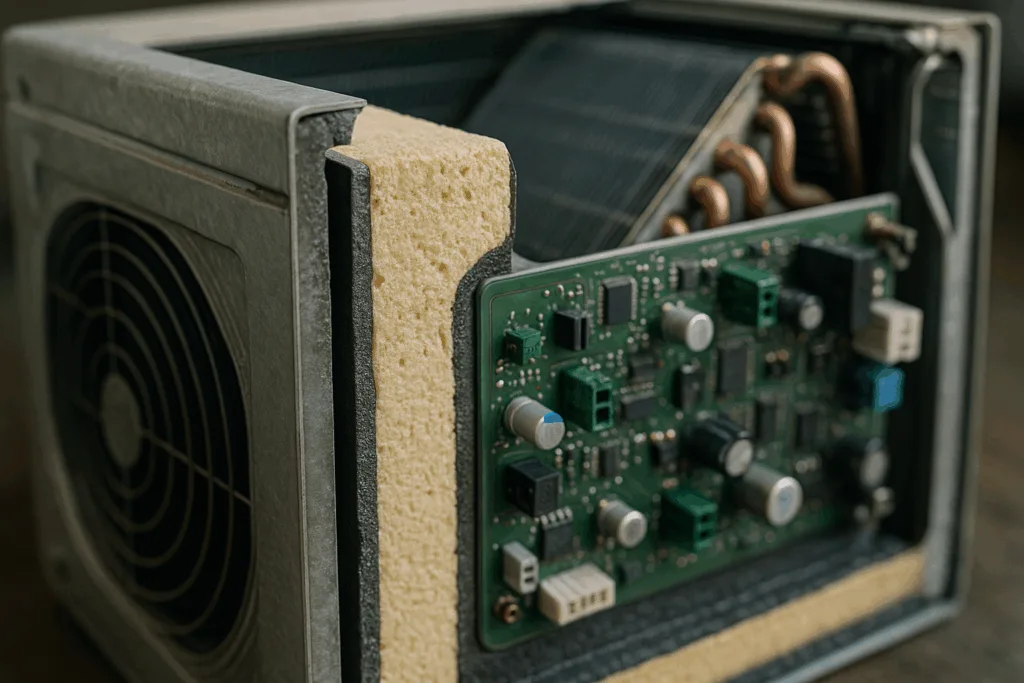Cyanoacrylate adhesives, or super glue, change the game in bonding different materials. They quickly connect surfaces by reacting with the moisture in the air. So, what is cyanoacrylate adhesive?
These adhesives are extremely flexible. They work on plastic, metal, wood, and even skin. Whether it’s for a quick fix at home or industrial construction, their quick-dry nature and strong connection make them popular. This popularity stems from how quickly they cure and their unbeatable strength.
One standout example is the ZDS™ Cyanoacrylate adhesive. It’s known for its rapid setting and variety of formulas. It’s designed for different needs, making it a reliable choice for numerous projects.
Key Takeaways
- Cyanoacrylate adhesives are super-fast bonding agents reacting with moisture.
- They work on diverse surfaces like plastic, metal, wood, and skin.
- Popular in both household and industrial applications due to their efficiency.
- Known for their strong bond strength and quick curing properties.
- Products like ZDS™ Cyanoacrylate offer tailored formulas for various needs.
Introduction to Cyanoacrylate Adhesive
Cyanoacrylate adhesive is a popular type of glue. It’s known for its quick sticking and strong hold. This makes it a go-to choice in many fields.
Cyanoacrylate Adhesive Definition
This adhesive is a quick-working industrial glue made from cyanoacrylate. It turns from liquid to solid fast when exposed to moisture. This creates a durable bond very quickly, perfect for fast repairs or exact placements.
History and Development
The story of cyanoacrylate glue starts with an accident in 1942 by Dr. Harry Coover. He was looking for materials for clear plastic gun sights. Though first thought to be not useful, its value was seen later. It was then sold by Eastman Kodak in the 1950s as “Eastman 910.”
Its ability to bond strongly and be used in many ways made it well-liked in different areas.
Common Names and Types
People know cyanoacrylate adhesive as “Super Glue,” “Krazy Glue,” and “Loctite.” There are different types for various needs:
- Ethyl Cyanoacrylate: Great for all-around bonding.
- Methyl Cyanoacrylate: Best for joining metal and rubber.
- Butyl and Alkoxy Cyanoacrylates: Used in medical glues for their bendiness and less harmful nature.
These types are used in everything from fixing things at home to specialized tasks in industries.
Properties of Cyanoacrylate Adhesive
Cyanoacrylate adhesives are known for their strong adhesive power and long lifespan. These adhesives are used widely across many industries. Let’s explore what makes cyanoacrylate adhesive properties special.
Composition and Structure
Cyanoacrylate adhesive’s power lies in its chemical makeup. These adhesives are mainly made of cyanoacrylates, a type of acrylic resin. They quickly harden when exposed to moisture. This quick action creates a strong bond. Cyanoacrylate adhesives can bond many materials, like metals, plastics, and ceramics, thanks to a good mix of monomers and stabilizers.
Curing Mechanism
The way cyanoacrylate adhesives set is vital to their effectiveness. They begin to set when they touch the moisture in the air. This starts a fast reaction that turns the liquid glue into a solid. This makes the setting process quick and efficient. Thus, cyanoacrylate adhesives are great for fast fixes at home or in industrial use.
Strength and Durability
Cyanoacrylate adhesives are impressive for their bonding strength and long-lasting nature. They can withstand extreme temperatures and moisture. Their strong bonds can last a long time, even in tough conditions. This is why many prefer cyanoacrylate adhesives for jobs that need to last.
Here’s a summary of what makes cyanoacrylate adhesives special:
| Property | Details |
|---|---|
| Composition | Acrylic resins, primarily cyanoacrylates. |
| Curing Mechanism | Moisture-initiated, rapid polymerization. |
| Strength and Durability | High adhesive strength; resistant to temperature and humidity. |
Uses of Cyanoacrylate Adhesive
Cyanoacrylate adhesives are used in many ways. They work well for jobs big and small, providing strong bonds quickly. This makes them perfect for both work and home tasks.
Industrial Applications
In the industrial world, these adhesives are highly valued. They are crucial in automotive, electronics, and aerospace fields.
- Automotive: Used for bonding small components and gaskets.
- Electronics: Ideal for assembling circuit boards and securing wires.
- Aerospace: Ensures durable bonds under high-stress conditions, particularly in aircraft assembly and maintenance.
Medical Use Cases
Cyanoacrylate’s role in medicine is impressive. They quickly bond wounds and are used in surgeries. This is due to their strong adhesion and safety for the body.
- Wound Closure: Cyanoacrylate adhesives are commonly used to seal minor cuts and lacerations.
- Surgical Adhesives: Utilized during surgeries to replace sutures and staples, reducing scarring and healing time.
- Precautions: It is crucial to use medical-grade cyanoacrylate to prevent toxic reactions.
Everyday Household Uses
At home, cyanoacrylate glue is a key tool for fast fixes and crafting. It works on many materials, helping with a variety of projects.
- Quick Repairs: Ideal for fixing broken items like ceramics, plastic toys, and metal utensils.
- DIY Projects: Great for arts and crafts, creating strong, lasting bonds for various materials.
- Ease of Use: Simple to apply, providing instant bonds without the need for clamping or heating.
Overall, cyanoacrylate adhesives shine in many areas, from industry to medicine, to home. They’re essential for reliable, strong bonding.
What is Cyanoacrylate Adhesive?
Cyanoacrylate adhesive is well-known for its quick bonding and strength. It’s also called super glue or instant adhesive. It’s used for everything from small crafts to big construction projects. This adhesive ensures a strong and lasting bond.
“This type of adhesive is designed to adhere to various materials in seconds, making it an invaluable asset in both professional and household settings.”
This adhesive is used in many fields like automotive, aerospace, medical, and home repairs. It’s chosen for its quick bonding ability. This makes it great for fast repairs and projects with tight deadlines.
Let’s look at the benefits:
- Fast Setting: It cures quickly, creating a strong bond in seconds.
- Versatile Applications: It works well with metal, plastic, rubber, or wood.
- Minimal Application: A little bit goes a long way, saving money on big and small projects.
In short, cyanoacrylate adhesives are valued for their versatility, speed, and strength. They’re perfect for quick fixes or major applications. This makes them a top choice for efficient and dependable bonding solutions.
Application Techniques for Cyanoacrylate Adhesive
Understanding the nature of various surfaces is key when using cyanoacrylate adhesive. It sticks well to many materials. Yet, knowing when it might not work is just as important.
Surfaces and Materials
This adhesive works on plastic, metal, rubber, and ceramics. Non-porous surfaces are ideal because they cure fast. Note that materials like Teflon need special primers.
Preparation and Priming
Getting the surface ready is crucial for a strong bond. Here are the steps for best results:
- Make sure the area is clean from any dirt or oil.
- Roughen smooth areas slightly to help the glue stick better.
- Ensure the area is dry before you apply the glue.
Some tricky materials might need priming. You can find special primers for this purpose.
Tips for Effective Bonding
Following these tips will help you use the adhesive well:
- Temperature Control: Keep the working area between 65-80°F (18-27°C) for best curing.
- Apply Sparingly: A little glue goes a long way. Too much can cause issues.
- Bonding Time: Press the parts together for 30 seconds to let the glue set well.
Using these methods will ensure strong bonds with cyanoacrylate adhesive.
Safety Tips for Using Cyanoacrylate Adhesive
Using cyanoacrylate adhesive offers quick and strong bonds, but it needs careful use to stay safe and effective. This section covers important tips for handling, first aid, and storage.
Handling Precautions
To be safe with cyanoacrylate adhesive, follow these steps:
- Always wear protective gloves and eyewear to avoid direct contact with the adhesive.
- Ensure proper ventilation in your working area to prevent inhaling fumes.
- Keep the adhesive away from heat or flames because it is flammable.
- Use in small amounts to control the application and avoid spills.
First-Aid Measures
Knowing the right first-aid for adhesive exposure is critical:
- Skin Contact: Don’t try to pull apart bonded skin. Soak it in warm soapy water and gently separate.
- Eye Contact: Wash immediately with water and get medical help.
- Inhalation: Go to fresh air right away. If breathing issues continue, see a doctor.
- Ingestion: Don’t make yourself vomit. Rinse your mouth well and seek medical assistance.
Storage Guidelines
Correct storage keeps cyanoacrylate adhesives effective for longer. Follow these tips:
- Store in a cool, dry place away from sunlight to avoid damage.
- Keep the adhesive in its original container, sealed tight to keep out moisture.
- For longer life, store adhesive in the fridge but let it warm up before use.
In summary, using the right precautions when handling, reacting quickly to accidents, and storing cyanoacrylate glue properly will greatly improve safety in your projects.
Advantages and Disadvantages of Cyanoacrylate Adhesive
Commonly known as super glue, cyanoacrylate adhesive is loved for its quick-bonding power. It’s versatile, too. This section looks at the good and the bad sides of using it.
Benefits Over Other Adhesives
Its fast-setting quality is a big advantage of cyanoacrylate adhesive. Unlike slow-drying glues like PVA, super glue takes just seconds to bond. This makes it perfect for quick repairs or when you’re in a hurry. Also, it forms strong bonds with many materials like plastics, metals, and ceramics.
Another plus is its versatility. Cyanoacrylate adhesive isn’t just for fixing stuff. People use it in many ways, from making things in factories to medical uses and DIY projects at home. You don’t need to mix it or have special tools to apply it. This makes it better than epoxy or silicone glues.
Potential Drawbacks
But there are drawbacks of fast-setting glues like cyanoacrylate. Once it dries, the glue can get brittle. It might not stand up to a lot of force or bending. So, it’s not the best choice for jobs that need a flexible bond.
Also, because it dries so fast, you can accidentally stick things you didn’t mean to. This includes sticking your fingers together! It’s important to be careful and use a precise applicator. Also, keep in mind that too much moisture over time can weaken the bond. This is something to think about for outdoor or boat uses.
In summary, knowing the advantages of cyanoacrylate adhesive and the drawbacks of fast-setting glues helps you make better choices. This means you can get the best performance for your projects.
Environmental Impact of Cyanoacrylate Adhesive
The impact of cyanoacrylate adhesive on the environment is becoming a big focus. Both manufacturers and users want to lessen its ecological effect. To do this, understanding its entire lifecycle, from creation to disposal, is key.
We will explore eco-friendly glue options and the proper ways to dispose of adhesives. Also, we’ll look into important laws that need following.
Eco-Friendly Alternatives
People are now looking for greener options for cyanoacrylate adhesive. Plant-based and water-based glues are becoming more popular. They are strong but do less damage to the environment.
Picking the right glue is crucial for green projects. You should look at what each glue is made of, its technical info, and what other customers say. For more info, check this comprehensive guide.
Disposal Methods
How you throw away glues is important for protecting the environment. Stick to your local rules for getting rid of adhesives. This helps prevent harm to our planet.
- Let the adhesive harden by exposing it to air or using an activator.
- Put the hardened adhesive in a sturdy container before you throw it away.
- Ask your local waste management about how to dispose of it properly.
Regulatory Considerations
Laws and regulations are key in making and using cyanoacrylate adhesives. Following these rules helps control the adhesive’s environmental impact. Everyone involved must know and obey these laws, including both national and local ones.
| Regulation | Summary |
|---|---|
| Resource Conservation and Recovery Act (RCRA) | Governs the disposal of hazardous waste to protect human health and the environment. |
| Environmental Protection Agency (EPA) Guidelines | Offers best practices for the disposal and management of adhesives. |
Innovations in Cyanoacrylate Adhesive Technology
The field of cyanoacrylate adhesives has grown a lot. This is because of non-stop improvements in the adhesives. These changes have made Super Glue better and increased its uses.
Recent Developments
Recently, adhesives have gotten much better quickly. Now, they can stick to many materials and stay flexible. This makes them useful not just in factories but in hospitals and dental offices too.
Future Trends
The future of glues focuses on being kind to the Earth. Scientists are working on eco-friendly options that still work great. They’re also making smart glues that can fix themselves and adjust to changes around them.
Research and Development
Research in cyanoacrylate adhesives aims at overcoming current challenges. New versions are being made to handle extreme heat and chemicals. This makes them better for industrial use. They’re also improving how these adhesives are used in surgery. For more about cyanoacrylate adhesives, check out this link.
As we find new ways to make adhesives, the future looks bright. We’re heading towards solutions that are not only strong but also good for the planet.
The following table shows how old and new cyanoacrylate adhesives compare:
| Feature | Traditional Cyanoacrylate Adhesives | Modern Cyanoacrylate Adhesives |
|---|---|---|
| Curing Time | Slower | Rapid |
| Bond Strength | Moderate | High |
| Material Compatibility | Limited | Broad |
| Eco-Friendliness | Low | High |
| Medical Applications | Basic | Advanced |
Best Brands of Cyanoacrylate Adhesive
Choosing the right cyanoacrylate adhesive brand is key to the success of your projects. We’ve put together a list of top brands. These come with customer feedback and buying tips.
Top-Rated Products
Brands like Loctite, Gorilla Glue, and ASI SI Gel are highly rated. Loctite has various viscosities for different uses. Gorilla Glue is famous for its strength and quick-setting feature. ASI SI Gel is praised for its versatility, working well on lots of materials.
Customer Reviews and Ratings
Customer reviews shed light on how these adhesives hold up in real-life settings. Loctite is often highlighted for its rapid cure time and strong bond. Gorilla Glue is celebrated for its enduring nature and flexibility. ASI SI Gel is known for its ease of use and solid adhesion.
Comparing Cyanoacrylate Adhesive to Other Adhesives
When looking at different adhesives, seeing how cyanoacrylate stacks up against others is key. Types like epoxy, PVA glue, and silicone have their own pros and cons. Strength, drying time, and where they work best are all important to consider.
Epoxy vs. Cyanoacrylate
Epoxy and cyanoacrylate are often compared for their unique benefits. Epoxy is known for its incredible strength and flexibility, perfect for tough jobs. On the flip side, cyanoacrylate dries quickly, making it great for fast repairs.
Epoxy works better for big projects because of its durability. But for small, detailed work, cyanoacrylate’s rapid setting is ideal. This shows in the quick set vs. long set glue debate.
PVA Glue vs. Cyanoacrylate
PVA glue and cyanoacrylate are used for different tasks. PVA, being water-based, is a favorite for wood and paper jobs. It becomes water-resistant after drying but takes time to cure. Meanwhile, cyanoacrylate binds items quickly, perfect for when you need a fast fix.
The comparison here really shines in timing. Cyanoacrylate leads the race with its speed.
Silicone Adhesive vs. Cyanoacrylate
The matchup of specialty glues and cyanoacrylate shows their unique uses. Silicone stands out for its flexibility and resistance to extreme temperatures. It’s chosen for jobs needing a bendable bond. Cyanoacrylate, though strong, can’t flex like silicone.
However, cyanoacrylate wins when you need something stuck fast. For flexible needs, silicone is the go-to. This is evident in a detailed adhesive comparison.
Conclusion
We’ve covered a lot about super glue, or cyanoacrylate adhesive, in this guide. It’s a strong and fast-acting glue used in many areas. Whether for industrial work, medical uses, or fixing things at home, it’s incredibly useful. Its special makeup and quick setting time make it essential.
Safe handling of super glue is important. We talked about how to use it right and stay safe. It’s crucial to prepare well, apply it correctly, and know what to do if there’s an accident. This way, you get all its benefits safely and effectively. We also discussed how super glue affects the environment and how to use and throw it away responsibly.
To sum up, super glue has a lot of advantages compared to other glues. It’s a favorite choice for both expert and home projects. Even with some downsides, its positives and new developments promise a bright future. Being smart about the glue you pick and following safety advice means you’ll always get strong, dependable results.
FAQ
What is cyanoacrylate adhesive?
Cyanoacrylate adhesive is often called “super glue” or “Krazy Glue.” It’s a quick bonding agent that works fast. It’s used for many things, from fixing things at home to putting stuff together in industries. This is because it bonds strongly and quickly.
What is the history and development of cyanoacrylate adhesive?
This adhesive was found by accident during World War II. Scientists were trying to make a clear plastic for gun sights. In the 1950s, it was sold to the public. Now, it’s known for bonding things fast and has many uses.
What are common names and types of cyanoacrylate adhesive?
It’s known as “super glue” or “Krazy Glue.” It has types like ethyl and methyl. Each type is used for different things. Ethyl is the most used for general jobs.
What are the properties of cyanoacrylate adhesive?
Cyanoacrylate adhesive has special chemical makeup. It lets it bond quickly and strongly. When it touches moisture, it hardens. This makes bonds that last and can handle weather and humidity.
What are some common uses of cyanoacrylate adhesive?
This adhesive is used in many ways. In industries like electronics, cars, and planes, it’s very helpful. Doctors use it to close wounds and in surgeries. At home, it’s great for quick fixes and crafts.
How should cyanoacrylate adhesive be applied?
To use it well, put it on clean, dry things. You might need to prepare the surface first. Keeping the area at the right temperature and waiting for it to set helps it bond better.
What safety measures should be taken when using cyanoacrylate adhesive?
Be careful when using this adhesive. Wear gloves and use it in a place with fresh air. If it gets on your skin, wash it off with warm, soapy water. Keep it in a cool, dry spot so it lasts longer.
What are the advantages and disadvantages of cyanoacrylate adhesive?
It bonds things quickly and strongly, which is good for many tasks. But, it can be brittle and stick to things you didn’t mean to bond. Using it correctly helps avoid these issues.
How does cyanoacrylate adhesive affect the environment?
When making and throwing away this adhesive, it can impact the environment. However, there are eco-friendly options. Be sure to throw it away right to keep the environment safe. Rules help make sure it doesn’t harm nature.
What are the recent innovations in cyanoacrylate adhesive technology?
New improvements make the adhesive work better and be greener. Researchers are working on making it stronger and safer for the planet. They want to solve current problems and make it even better.
Which are the best brands of cyanoacrylate adhesive?
Brands like Loctite, Gorilla Glue, and Permatex are highly rated. People trust them for their reliability. You can find good cyanoacrylate adhesives at stores, Amazon, and speciality shops.
How does cyanoacrylate adhesive compare to other adhesives?
It works faster and is simpler to use for small fixes than epoxy. Epoxy is better for long-term projects. Cyanoacrylate is waterproof and sticks to more materials than PVA glue. Silicone adhesive is flexible and can handle heat, but cyanoacrylate sticks faster.


